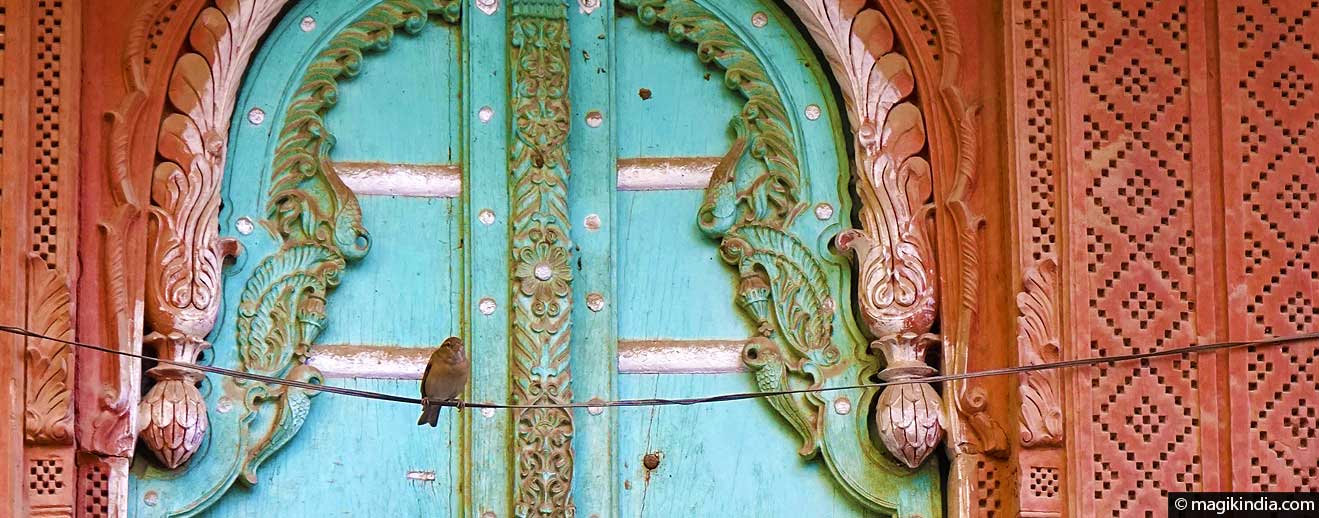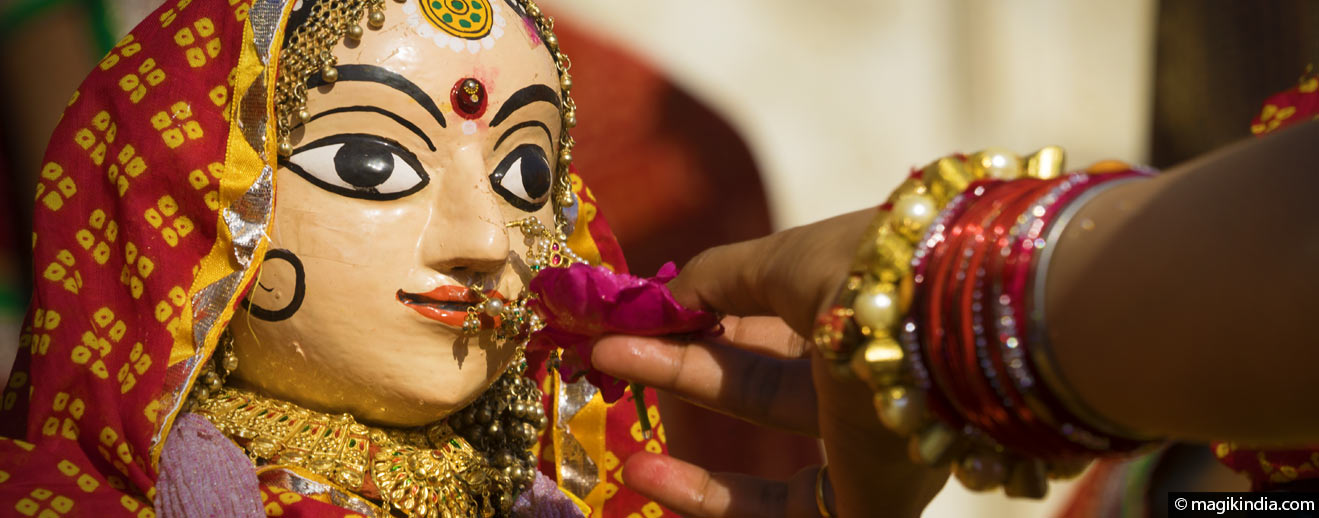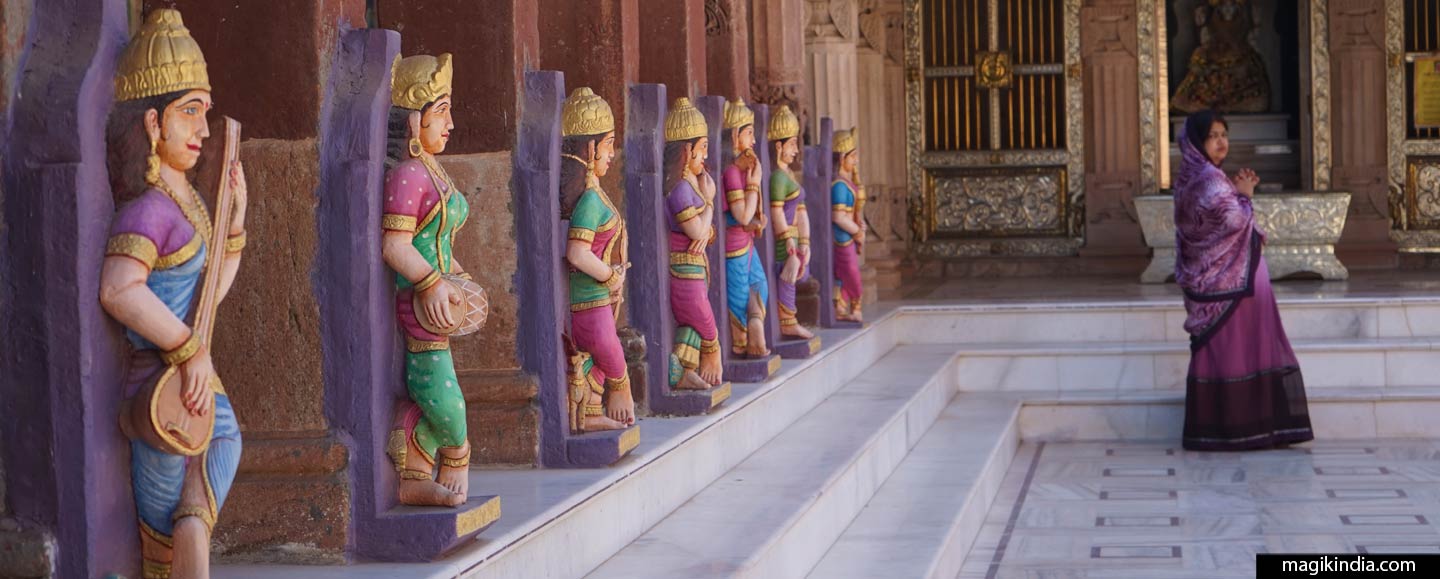
Pushkar Mela, between the sacred and the profane
Once a year, under the radiant glow of Kartik Purnima, the sacred full moon of November, the city of Pushkar becomes the stage for a unique spectacle where the divine meets the nomadic spirit of Rajasthan. As thousands of pilgrims flock to the shores of the sacred lake to honor the god Brahma in a mystical fervor, the surrounding dunes come alive to the rhythm of the Pushkar Mela, one of the largest camel fairs on the planet.
Pushkar, camel fair
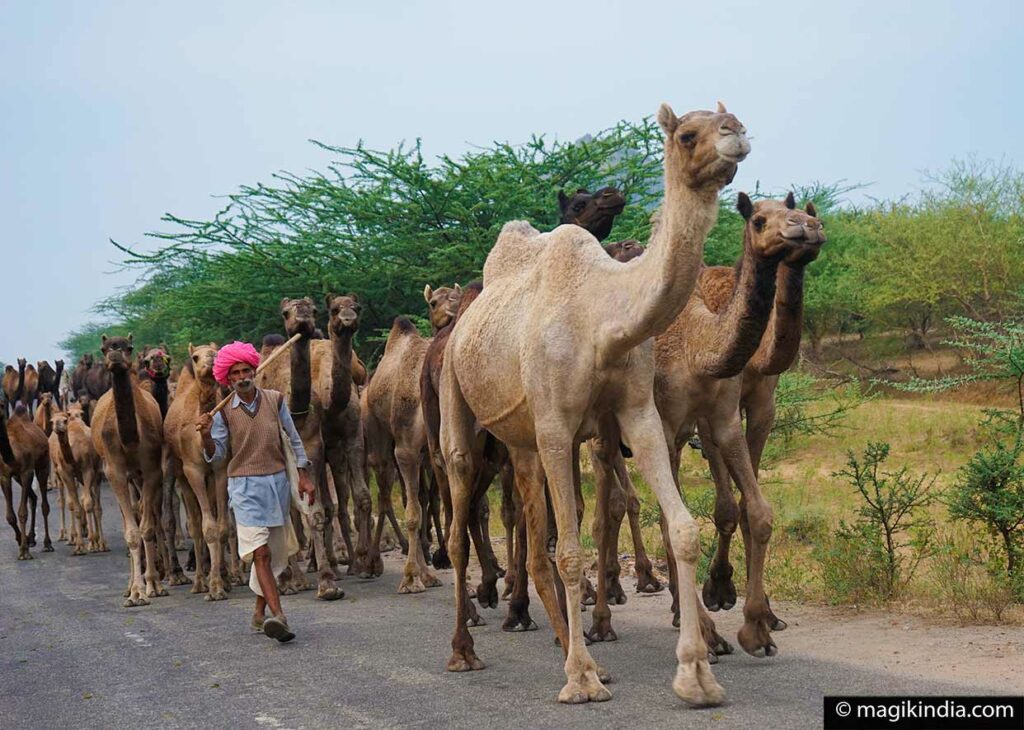
As the full moon of Kartik Purnima approaches, the Thar Desert comes alive with age-old activity. On the arid tracks leading to the holy city of Pushkar, the usual silence gives way to the rhythmic pounding of camel herds.

Amidst the golden dust, the proud figures of the Rabari people emerge. This community of shepherds, ancestral guardians of the herds, embodies the very soul of this migration. Dressed in their voluminous turbans and immaculate white tunics, they press onward despite their exhaustion. For some, the journey began several weeks ago, covering hundreds of kilometers on foot, guiding with natural authority columns of camels stretching as far as the eye can see.
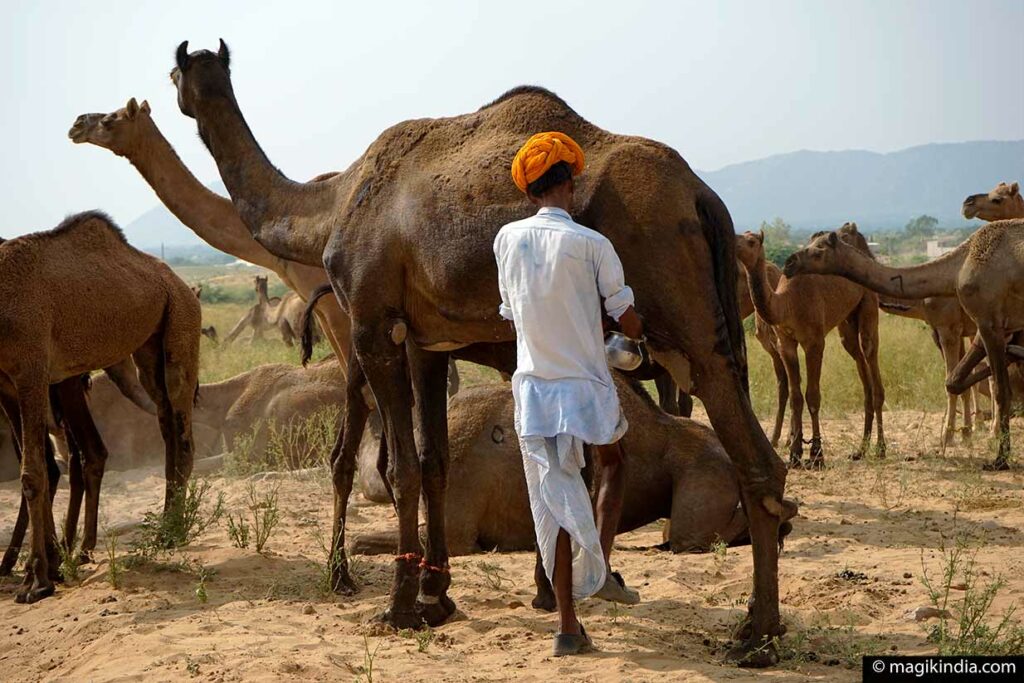
The arrival point is the vast, dusty esplanade that stretches to the west of the city. In the blink of an eye, an ocean of brown canvas tents and campfires materializes out of nowhere. It is here, in this ephemeral city, that the camel drivers set up their temporary homes for a few weeks.

Pushkar is indeed the scene of a colossal trade. More than 20,000 camels are gathered there, making this one of the largest camel fairs in the world. Negotiations are an art form: between puffs of a bidi (a local hand-rolled cigarette), buyers inspect the camels’ teeth, the firmness of their humps, and the elegance of their gait.
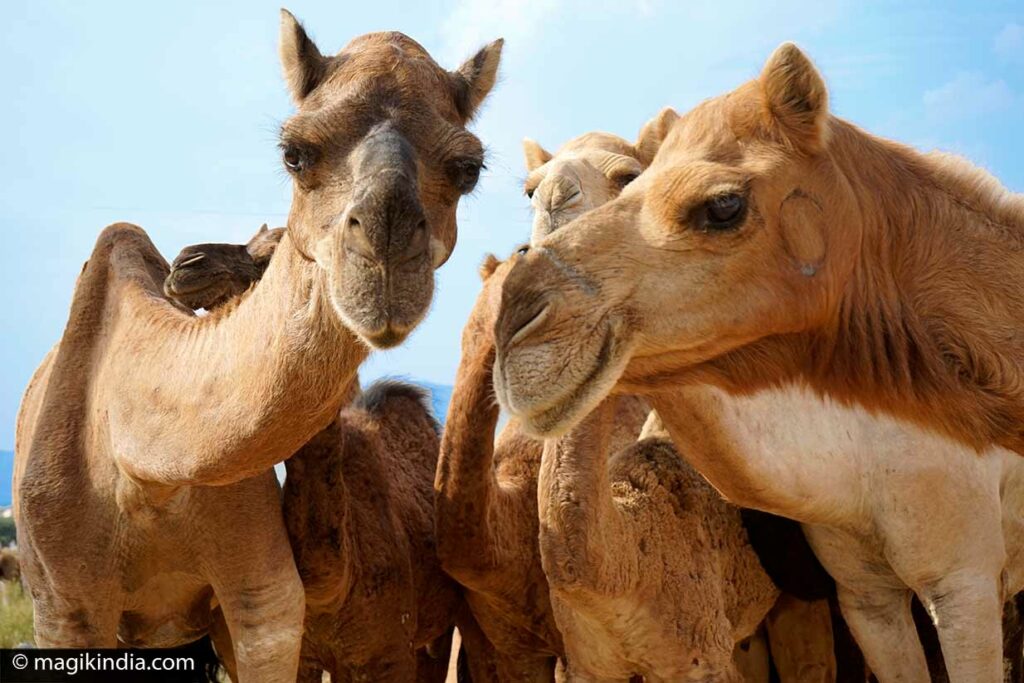
Although the camel is king, the fair is also a gathering place for sheep and goat breeders from the desert, but above all for breeders of Marwari horses, the noble breed of Rajasthan, recognizable among thousands thanks to its curved, crescent-shaped ears, a unique characteristic among equines.
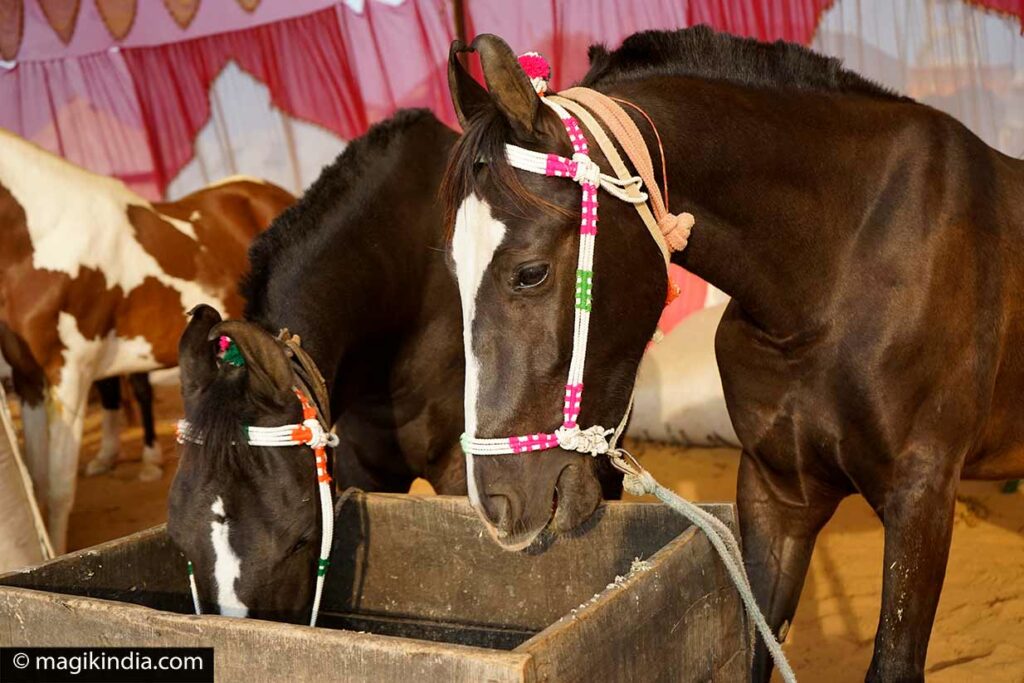
The Marwari is one of the five indigenous horse breeds of India; it originates from the Marwar region of Rajasthan, from which it takes its name. It is a cross between hardy native ponies and the Arabian horse brought to India during the Mughal invasions.
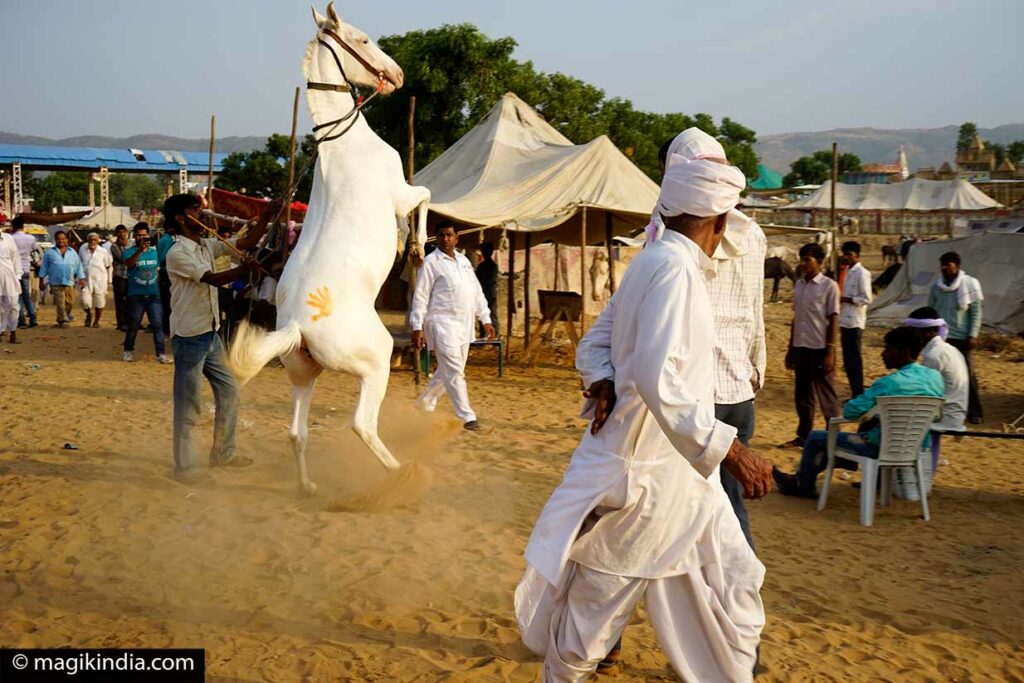
The Rathores, Rajput rulers of the Marwar region, were the first to breed Marwari horses, starting in the 12th century CE. The horses were subsequently used by the Maharajas and in the cavalry, the Marwari being known for its endurance and docile temperament.
Pushkar Mela, a sacred fair above all else
The Pushkar Mela cannot be reduced to a simple livestock market; it is, above all, a mystical interlude, a moment of fervor where time seems to stand still. For Hindus, it is one of the most meritorious pilgrimages of the year.

While the fair is in full swing on the dunes, the city of Pushkar transforms into a vast open-air temple. The sacredness of the place is based on a founding legend: the god Brahma is said to have killed a demon with a lotus flower, and the petals that fell to the ground supposedly gave rise to the sacred lake.

The highlight of the fair is the full moon night of the month of Kartik. It is said that this is when spiritual energy is at its peak. For the thousands of pilgrims who come from all over Rajasthan and neighboring states, bathing in the lake at dawn on this holy night is the ultimate act of devotion. It is believed that the 330 million deities of the Hindu pantheon gather here to bless the waters.
The Mela festivities

The Mela is also a gigantic open-air fair, a joyful chaos where ancestral traditions rub shoulders with modern exuberance. The esplanade vibrates with the sounds of traditional music concerts and amusement parks where illuminated Ferris wheels defy the desert dust.

Amidst the stalls selling juttis (traditional Indian shoes), cutlery, embroidered fabrics, and spices, the fair becomes the stage for famous Rajasthani folk competitions: camels, adorned with intricate tattoos and multicolored decorations, compete for beauty prizes in decorating contests, while men vie for the coveted award for the longest mustache.
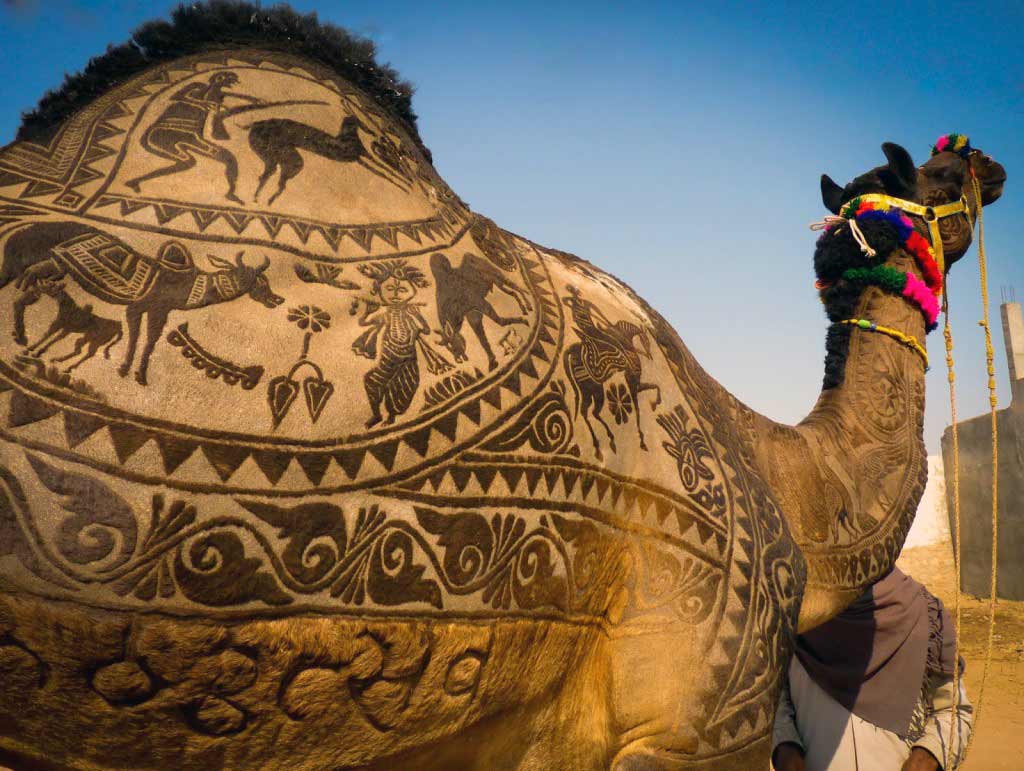
Leaving Pushkar means carrying with you a piece of eternal India. The air, filled with the songs of troubadours and the clamor of the rides, transforms this fair into a total celebration, an explosion of color and life unique to Rajasthan. Yet, the true journey is an inner one. In this sublime chaos, the fair becomes a collective prayer, a vibrant reminder that spirituality in India resides not only in the silence of temples, but also in the exuberant joy of its people.

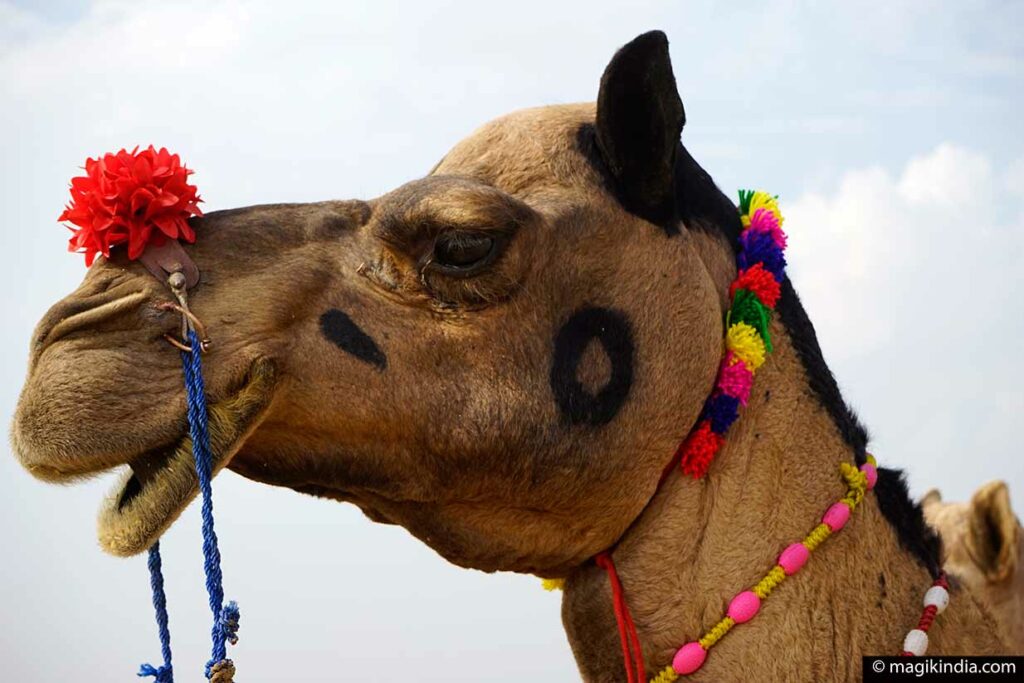
Practical tips
The perfect timing
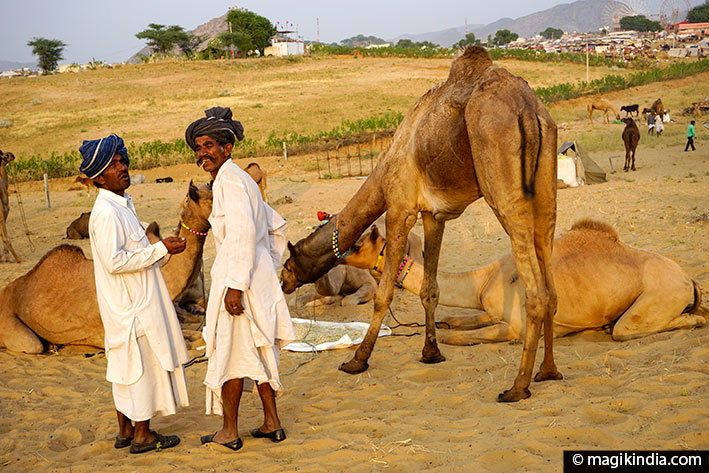
The fair follows the Hindu lunar calendar (the month of Kartik). The 2026 fair will take place from November 17th to 24th.
- Arrive early: the animal trade (camels, horses) takes place during the first few days. The herders often leave before the fair ends. I recommend arriving a few days before the start of the fair to meet the Rabari people with their herds on the roads.
- The spiritual highlight: the last day (Kartik Purnima, the full moon) is the most sacred moment when thousands of pilgrims bathe in the lake.
2. Respect for traditions and prohibitions
Pushkar is a holy city. The rules there are strict and enforced:
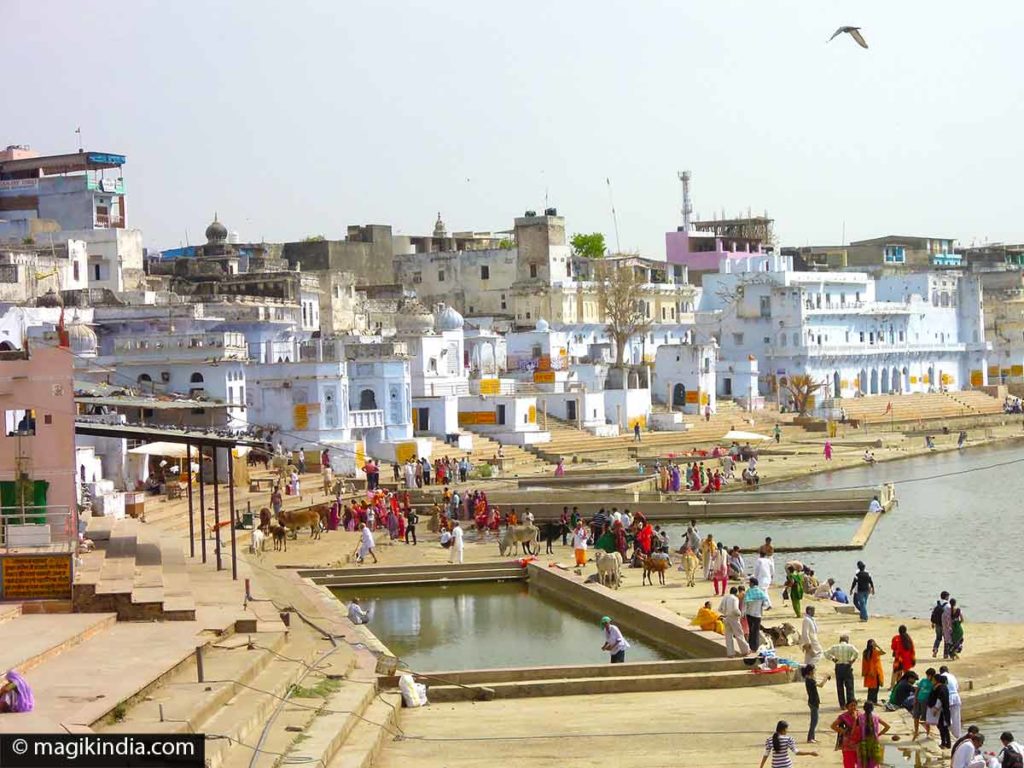
- Food: Meat, fish, and eggs are strictly prohibited (the city is 100% vegetarian).
- Substances: Alcohol is forbidden.
- Footwear: You will need to remove your shoes before approaching the ghats (steps leading to the lake) and entering the temples.
3. Clothes

- Modesty: Cover your shoulders and knees (for both men and women). A large shawl or scarf is ideal for protection from the sun and dust, and for covering up when visiting temples.
- Temperature fluctuations: In November, it gets very hot during the day, but temperatures drop significantly as soon as the sun sets. Pack a warm jacket or a thick sweater for evenings in the desert.
- Face mask or scarf: The fairgrounds are extremely dusty due to the presence of animals. A face mask or scarf to cover your nose and mouth is essential.
- Walking shoes: During the fair, expect to do a lot of walking. The city center is closed to cars, and there aren’t many tuk-tuks available to take you to the various sites (esplanades, dunes, etc.) considering the large crowds.
4. Pitfalls to avoid and safety

- The “Pushkar Blessing”: People may offer you flowers to make an offering at the lake, then demand large sums of money for the “blessing.” Politely refuse or agree on a nominal price (10-20 rupees) from the start.
- Photos: Always ask permission before photographing pilgrims or livestock owners. Some sadhus (holy men) may ask for money in exchange for a photo.
- Reservations: Accommodation prices double during the fair. Book several months in advance. The best establishments sell out very quickly.
- Transportation: If your hotel is located outside the city center, check if it offers a shuttle service.
5. Accommodation
The hotel options in Pushkar during the fair are quite unique. The town transforms from a peaceful village into a temporary metropolis. Here are the best options to consider, depending on your travel style.
1. The tent camps (the immersive experience)
This is the most iconic option. Luxury or semi-luxury camps are set up in the desert, on the edge of the fairgrounds.

- Pushkar Adventure Desert Camp, Pushkar Desert Karni Camp, Camp Land’s End, and Aagman India Camp.
- Advantages: immediate proximity to camel breeders and desert activities. Campfire atmosphere in the evening.

2. Luxury hotels located outside the city center
For travelers who prefer peace and quiet in a comfortable setting.

- The Westin Pushkar Resort & Spa
- Ananta Spa & Resort : A modern complex located in the hills, ideal for escaping the crowds at the end of the day.
3.Guesthouses in the old town (budget-friendly)
- There are many budget hotels or guesthouses in the old town offering more attractive prices, such as the Zostel Pushkar and Inn Seventh Heaven.

- PLEASE NOTE: While these establishments are convenient due to their proximity to the various sites, they are also extremely noisy because of the nearby loudspeakers, the crowds, and the nighttime activities such as the sacred chants that play continuously during the last few days of the fair. Light sleepers should look elsewhere!
VISIT RAJASTHAN DURING THE PUSHKAR MELA

